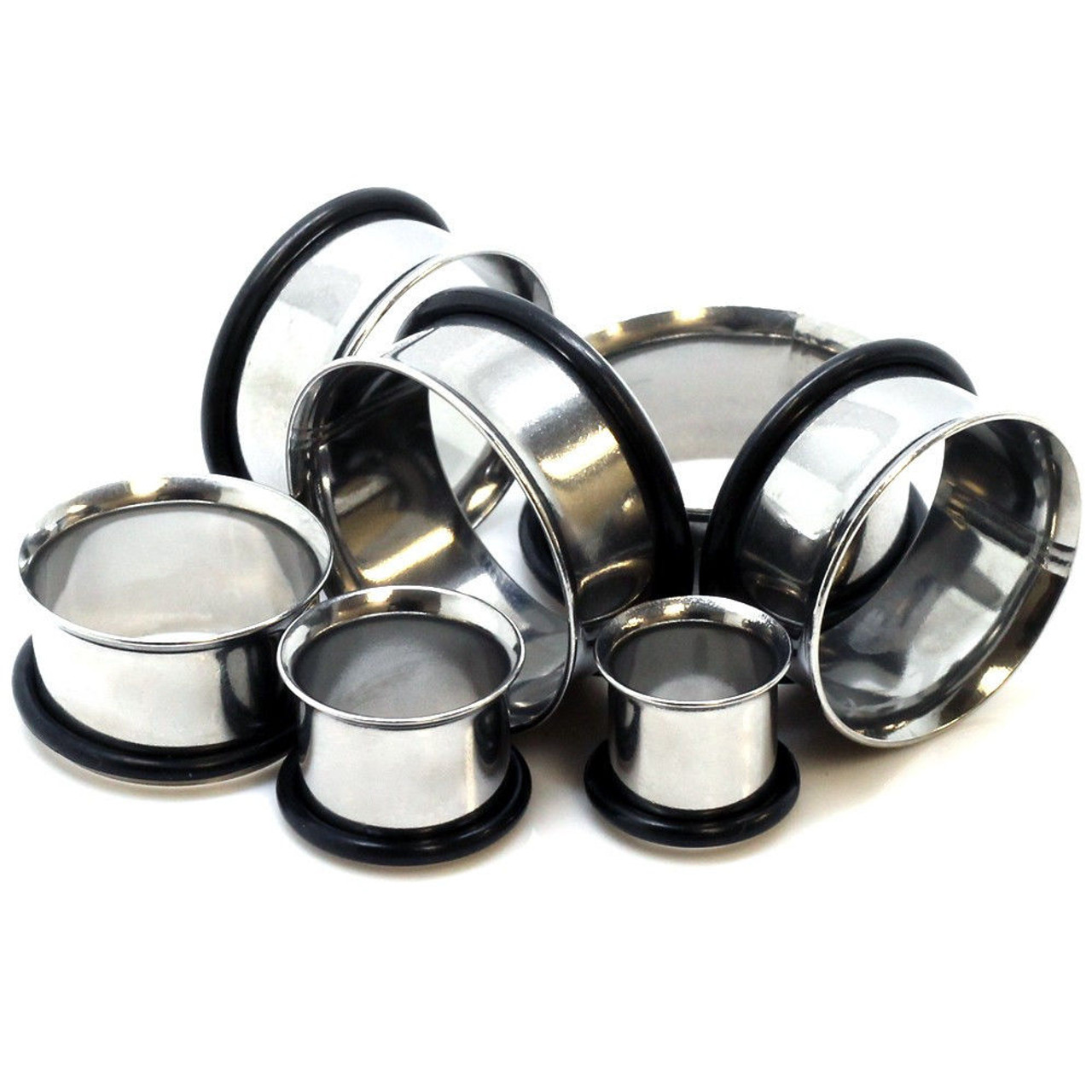Dead stretching is one of the most popular and highly effective techniques for expanding body piercings so that they can accommodate bigger pieces of body jewelry.
In this article, you will find comprehensive information on dead stretching: how exactly it works, how to do it properly, potential risks associated with it, and how to avoid them. We will, also be looking at the best jewelry materials for use in facilitating dead
What Is Dead Stretching?
Dead stretching is best described as a natural method for expanding body piercings: one where you just bid your time until the piercing heals fully, then insert a bigger piece of jewelry which leads to loosening – in turn giving room for even larger jewelry. In this context, the word ‘dead’ is used to mean that there is no active manipulation of tissue. Instead, the process relies on the body’s natural healing mechanisms.
Besides dead stretching, other techniques for expanding body piercings include tapering, taping, and using weights.
There are many people who regard dead stretching as the best method for expanding piercings on account of the fact that it is pain-free (if done properly), cost-effective, and quite efficient. This is also the most natural approach to piercing expansion, and it is far less traumatic than other techniques such as tapering and using weights. On the downside though, this is a piercing expansion technique that requires quite a lot of time and patience.
Preparing for Dead Stretching

If you want to get good results from dead stretching, you need to prepare for it in the right manner. In that regard, you need to:
- Ensure that the piercing you will be expanding through dead stretching is fully healed. If you attempt to do dead stretching on a piercing that is not properly healed, you will be setting yourself up for potentially nasty complications.
- Choose the right jewelry. As we noted earlier, the way dead stretching works is through the gradual introduction of bigger jewelry into the piercing. Now that jewelry needs to be of the right size and shape. It also needs to be jewelry made from the appropriate materials.
- Observe high standards of hygiene and cleanliness. To this end, it is important to ensure that you thoroughly sterilize the jewelry and other tools to be used in the process. The piercing site also needs to be very thoroughly cleaned.
The Dead Stretching Process
At its core, the dead stretching process has 3 major steps:
Firstly, you need to keenly check the piercing and ensure that it is truly fully healed. You will know that the piercing is fully healed if it is not tender to touch, there is no redness/discharge in and around it and the jewelry in it has gotten to a point where it feels loose and capable of moving more or less freely.
Once you are sure that the piercing is fully healed, you need to get the bigger jewelry that you are to insert into it. This should be only slightly larger than the previous jewelry. So, it is best to shop for the jewelry by millimeters, rather than by gauge.
Now once you (very gently) insert the slightly larger jewelry, what you need to do is wait for the piercing to heal before moving on to the next slightly larger size. Then, you repeat the process until you get to your target jewelry size.
In order to minimize discomfort, you need to precede the stretching with a hot shower. Massaging the area around the piercing with oil can also help greatly. Another way to minimize the discomfort would be by using a lubricant.
The stretching shouldn’t be painful. If there is any pain or tearing, it means that the piercing isn’t ready for the bigger jewelry: so, you go back to the old size in the meantime.
Healing and Aftercare

When embarking on dead stretching, it is important for you to have proper awareness of the healing process as well as the necessary aftercare:
- It typically takes between 6 and 8 weeks for a piercing to heal well enough for you to take dead stretching to the next level. But as you move towards the bigger jewelry sizes (those that happen to be bigger than 0 gauge), the healing time is bound to increase to between 12 and 14 weeks.
- In terms of aftercare, you need to have a routine for cleaning the piercing site daily – that is, removing the jewelry, cleaning it thoroughly as well as cleaning the actual piercing. It is also important to moisturize the area around the piercing regularly. Another important aspect of aftercare is that of avoiding irritants (such as unnecessary touching, touching with unclean hands as well as sleeping in a position that applies pressure on the piercing).

Potential Risks and How to Avoid Them
Some of the major risks associated with dead stretching include blowouts and tearing. There is also the even more worrisome risk of infection.
The way to avoid such issues is firstly by not rushing the dead stretching process. Once you introduce a new bigger piece of jewelry, you need to give the piercing adequate time to heal (6 to 8 weeks for the smaller sizes and 12 to 14 weeks for the bigger sizes) before moving on to the next bigger size. In each case, ensure that the subsequent jewelry size is only very slightly bigger than the previous one. It is also critical to observe proper hygiene. That is the only way you can avoid issues such as infections.
In case complications such as blowouts and tearing arise, you need to go back to a smaller jewelry size. And should you see any signs of infection, the right thing to do would be to see a doctor as soon as possible.
Jewelry Choices for Dead Stretching
The jewelry you use in the dead stretching process needs to be that which is made of the right materials. Those include titanium, surgical steel, gold, or glass, it depends on your preferences. With such materials, healing will tend to be faster and more straightforward.
It is important for you to avoid potentially problematic materials, which would include the likes of low-quality metals as well as certain plastics and the likes of silicone and acrylic (which can cause nasty irritations).
The jewelry to be used in dead stretching needs to be smooth. It should also be appropriately shaped (single flared tends to be best for this use).
Conclusion
As we have seen, dead stretching can be a highly effective and minimally traumatic technique for expanding body piercings so that they can be capable of accommodating bigger jewelry. The most important thing in the dead stretching process is patience: as you need to ensure that there is complete healing before moving from one jewelry size to the next slightly bigger one. Another key to success in this process is listening to your body and prioritizing safety to ensure that the process moves smoothly and ultimately yields the desired results with no complications.
 Free Returns on all orders.
Free Returns on all orders. 



